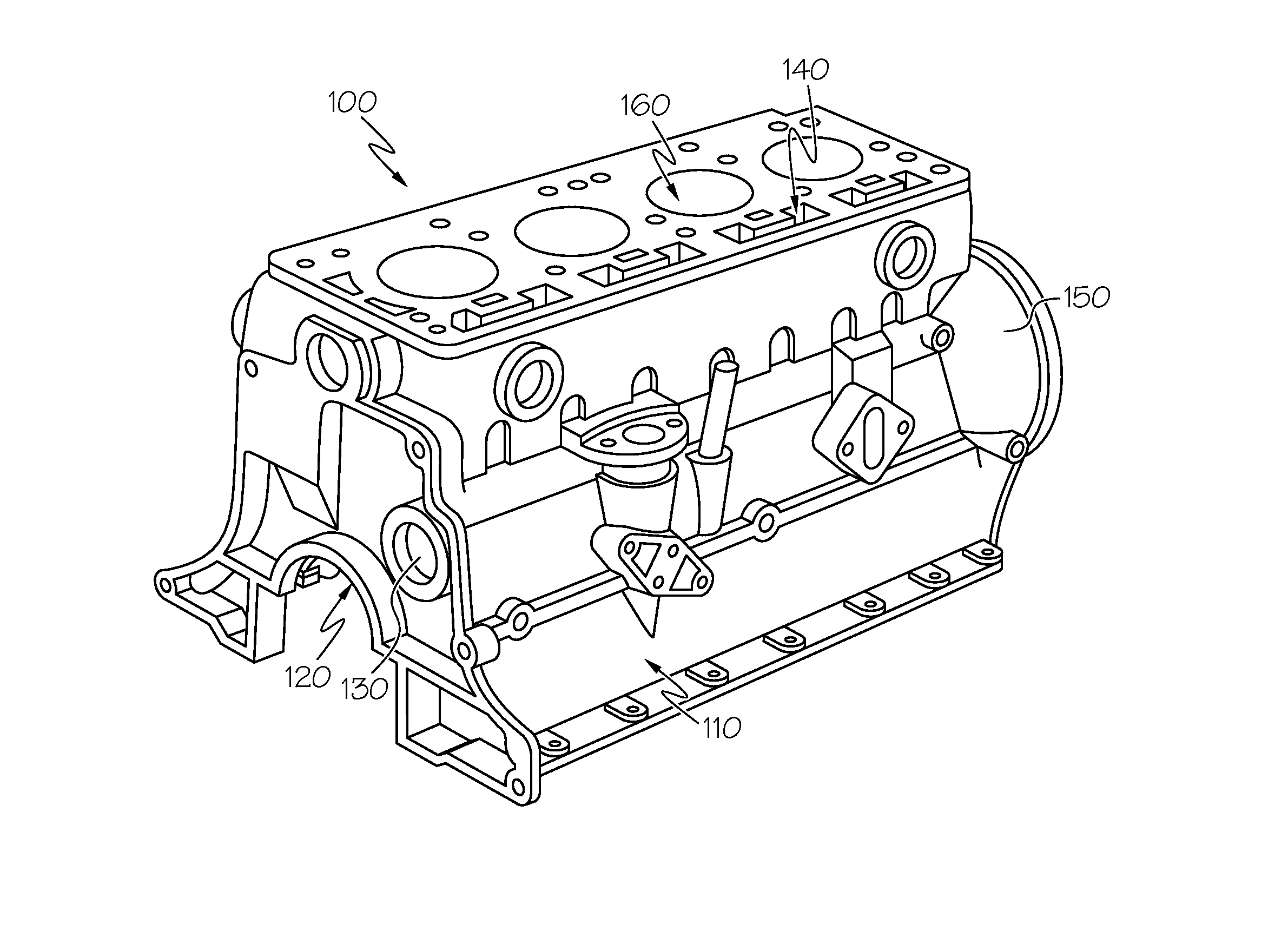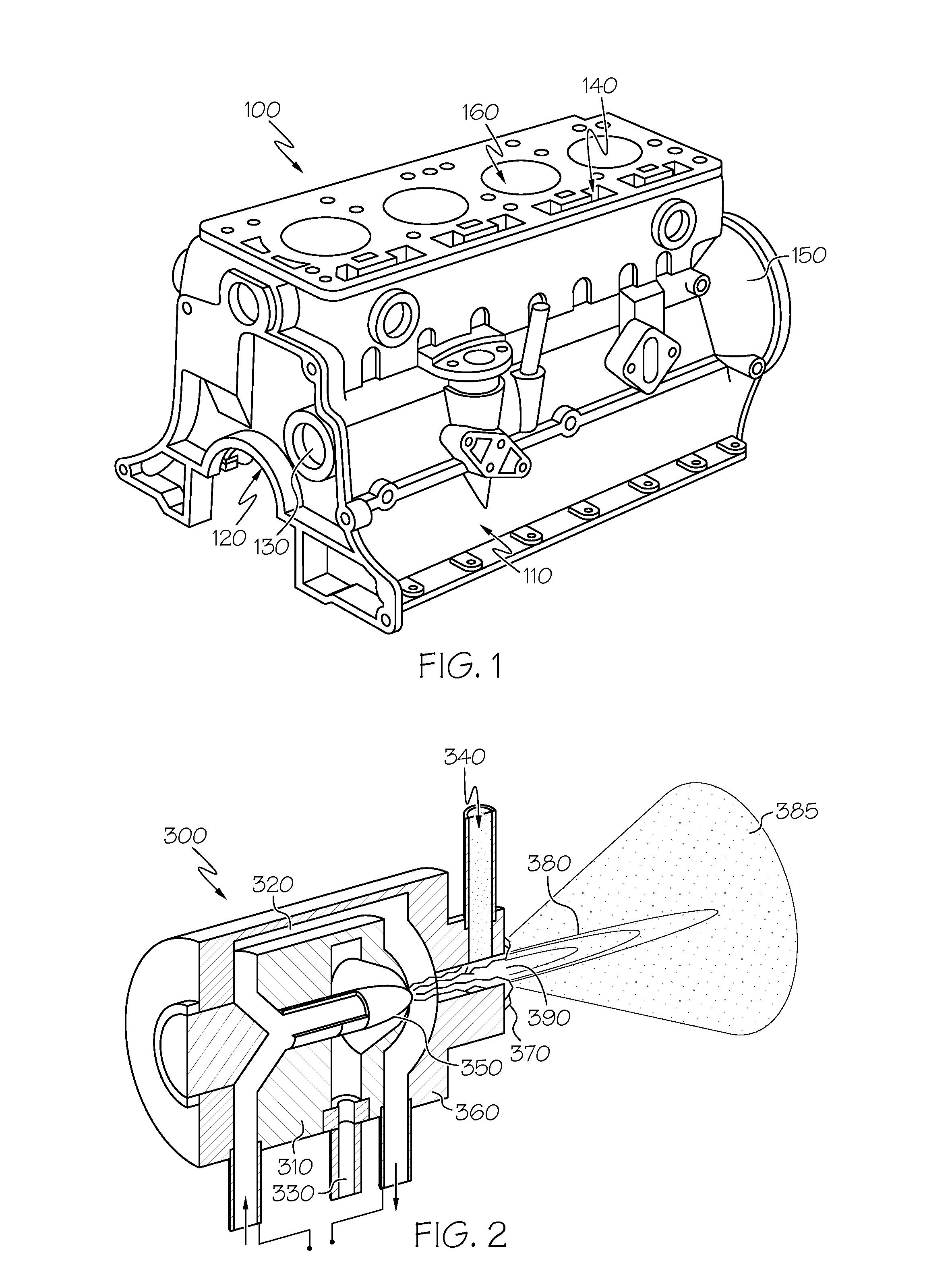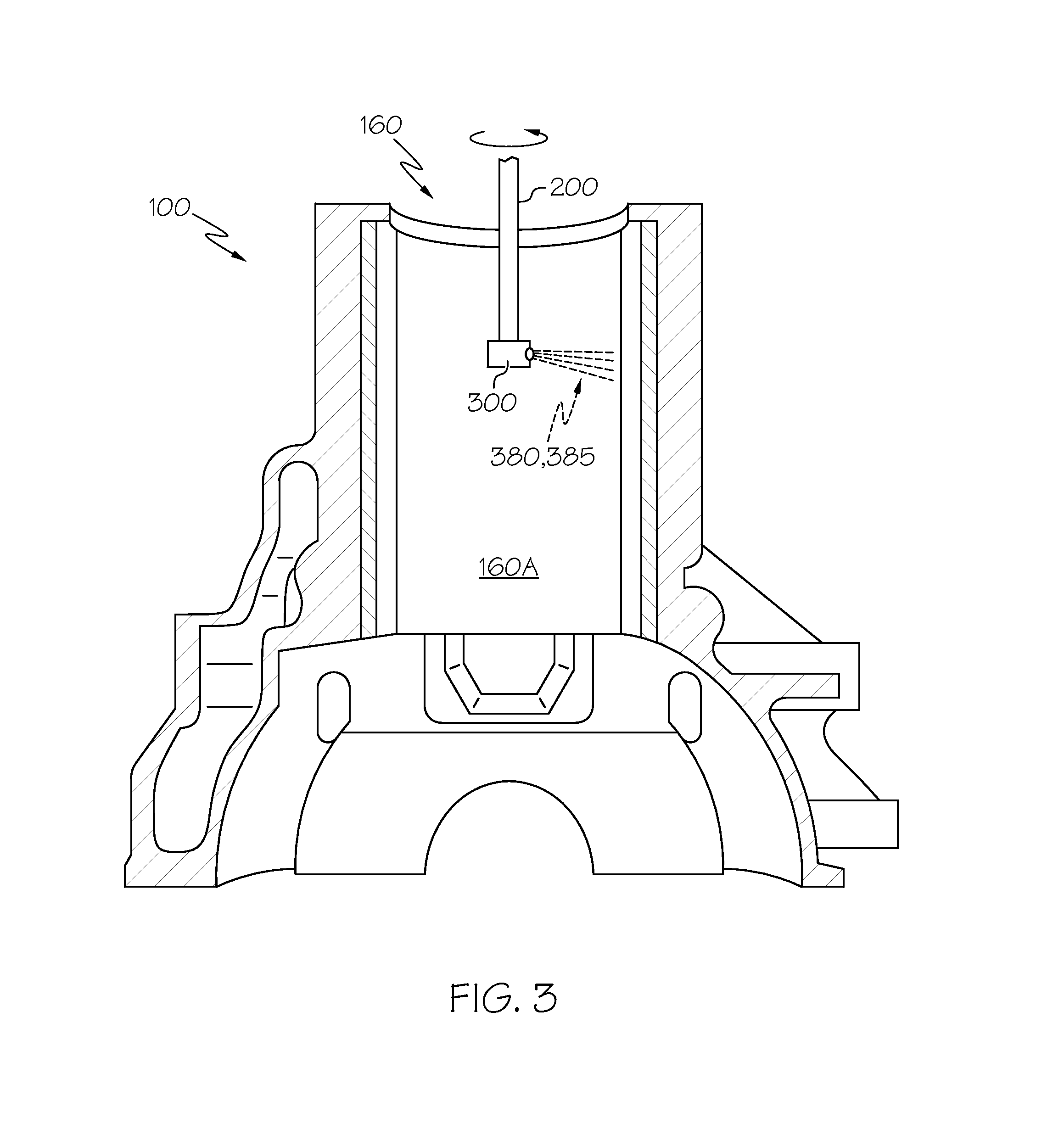Surface activation by plasma jets for thermal spray coating on cylinder bores
a plasma jet and thermal spray technology, applied in plasma techniques, mechanical equipment, machines/engines, etc., can solve the problems of increasing the cost of mechanical roughening/locking, adding significant complexity and cost to the manufacturing process of coated components, and affecting the surface characteristics of target substrates, etc., to achieve the effect of improving the surface characteristics of the target substrate and simplifying the pretreatment plasma spraying devi
- Summary
- Abstract
- Description
- Claims
- Application Information
AI Technical Summary
Benefits of technology
Problems solved by technology
Method used
Image
Examples
Embodiment Construction
[0012]Referring first to FIG. 1, a simplified view of four-cylinder automotive internal combustion engine block 100 is shown. The block 100 includes portions for—among other things—the crankcase 110, the crankshaft bearing 120, the camshaft bearing 130 (in the case of engines with overhead valves and pushrods), water cooling jackets 140, flywheel housing 150 and cylinder bores 160. These bores 160 may include an alloyed surface layer (not shown) that is either integrally formed with the substrate of each bore 160, or as a separate insert or sleeve that is sized to fit securely within. In one form, such alloyed surface layer can be used to enhance the corrosion, wear or thermal resistance of the bore 160. In fact, in engine configurations where the block 100 is cast from a lightweight material, such as aluminum and its alloys (such as A380, A319 or A356), the addition of such surface layers was traditionally deemed to be necessary as a way to impart additional thermal and wear resist...
PUM
| Property | Measurement | Unit |
|---|---|---|
| pressure | aaaaa | aaaaa |
| adhesion | aaaaa | aaaaa |
| nitric acid | aaaaa | aaaaa |
Abstract
Description
Claims
Application Information
 Login to View More
Login to View More - R&D
- Intellectual Property
- Life Sciences
- Materials
- Tech Scout
- Unparalleled Data Quality
- Higher Quality Content
- 60% Fewer Hallucinations
Browse by: Latest US Patents, China's latest patents, Technical Efficacy Thesaurus, Application Domain, Technology Topic, Popular Technical Reports.
© 2025 PatSnap. All rights reserved.Legal|Privacy policy|Modern Slavery Act Transparency Statement|Sitemap|About US| Contact US: help@patsnap.com



